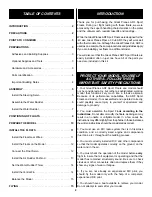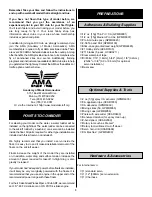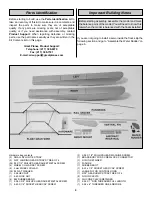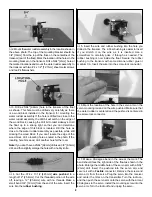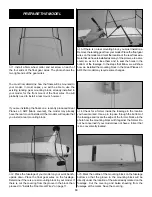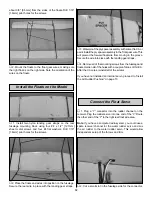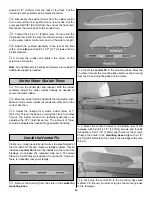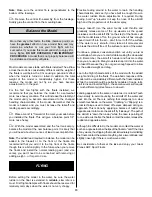
Remember: Take your time and follow the instructions to
end up with a well-built model that is straight and true.
If you have not flown this type of model before, we
recommend that you get the assistance of an
experienced pilot in your R/C club for your first flights.
You’ll learn faster and avoid risking your model before you
are truly ready to fly it. Your local hobby shop has
information about clubs in your area whose membership
includes experienced pilots.
In addition to joining an R/C club, we strongly recommend you
join the AMA (Academy of Model Aeronautics). AMA
membership is required to fly at AMA sanctioned clubs. There
are over 2,500 AMA chartered clubs across the country. Among
other benefits, the AMA provides insurance to its members who
fly at sanctioned sites and events. Additionally, training
programs and instructors are available at AMA club sites to help
you get started the right way. Contact the AMA at the address or
toll-free phone number below:
Academy of Model Aeronautics
5151 East Memorial Drive
Muncie, IN 47302-9252
Tele. (800) 435-9262
Fax (765) 741-0057
Or via the Internet at: http://www.modelaircraft.org
For steering your model on the water, a water rudder will be
installed on the right float. The water rudder can be connected
to the aircraft rudder by a pushrod, or a servo can be installed
inside the float. All parts required for either type installation are
included with this kit (servo not included).
We highly recommend that you install a servo inside the
float. It is easy to do and it makes installation/removal of the
floats on the aircraft easier.
Floats increase the weight of the model they are installed
on. In addition, water drag and surface tension increase the
amount of power required for takeoff. In-flight drag is also
greatly increased.
If your model had “adequate” power before floats are installed,
it will likely be very marginally powered with the floats. It is
recommended that you use an engine in the upper end of the
recommended power range with these floats.
For the .40 size Great Planes Piper J-3 Cub ARF, we recommend
an O.S.
®
.46 FX 2-stroke or an O.S. FS 70 4-stroke engine.
❏
1/2 oz. [15g] Thin Pro
™
CA (GPMR6001)
❏
1/2 oz. [15g] Medium Pro CA+ (GPMR6007)
❏
Pro 6-minute epoxy (GPMR6045)
❏
2-56 Tap and Drill (GPMR8100)
❏
Stick-on segmented lead weight (GPMQ4485)
❏
#1 Hobby knife (HCAR0105)
❏
#11 blades (5-pack, HCAR0211)
❏
Clear waterproof tape
❏
Drill bits: 1/16” [1.6mm], 5/64" [2mm], 1/8" [3.2mm].
(25/64" or 3/8" [9.9 or 9.5mm] for optional
servo installation.)
❏
Razor saw
❏
2 oz. [57g] spray CA activator (GPMR6035)
❏
CA applicator tips (HCAR3780)
❏
CA debonder (GPMR6039)
❏
Mixing sticks (50, GPMR8055)
❏
Mixing cups (GPMR8056)
❏
Pliers with wire cutter (HCAR0630)
❏
Denatured alcohol (for epoxy clean up)
❏
Z-bend pliers (HCAR2000)
❏
Rotary tool such as Dremel
®
❏
Rotary tool reinforced cut-off wheel
❏
Servo horn drill (HCAR0698)
❏
CG Machine
™
(GPMR2400)
For internal servo:
❏
(1) standard servo
❏
(1) 12" [300mm] servo extension
❏
(1) Y-harness
Hardware & Accessories
Optional Supplies & Tools
Adhesives & Building Supplies
PREPARATIONS
POINTS TO CONSIDER
3


